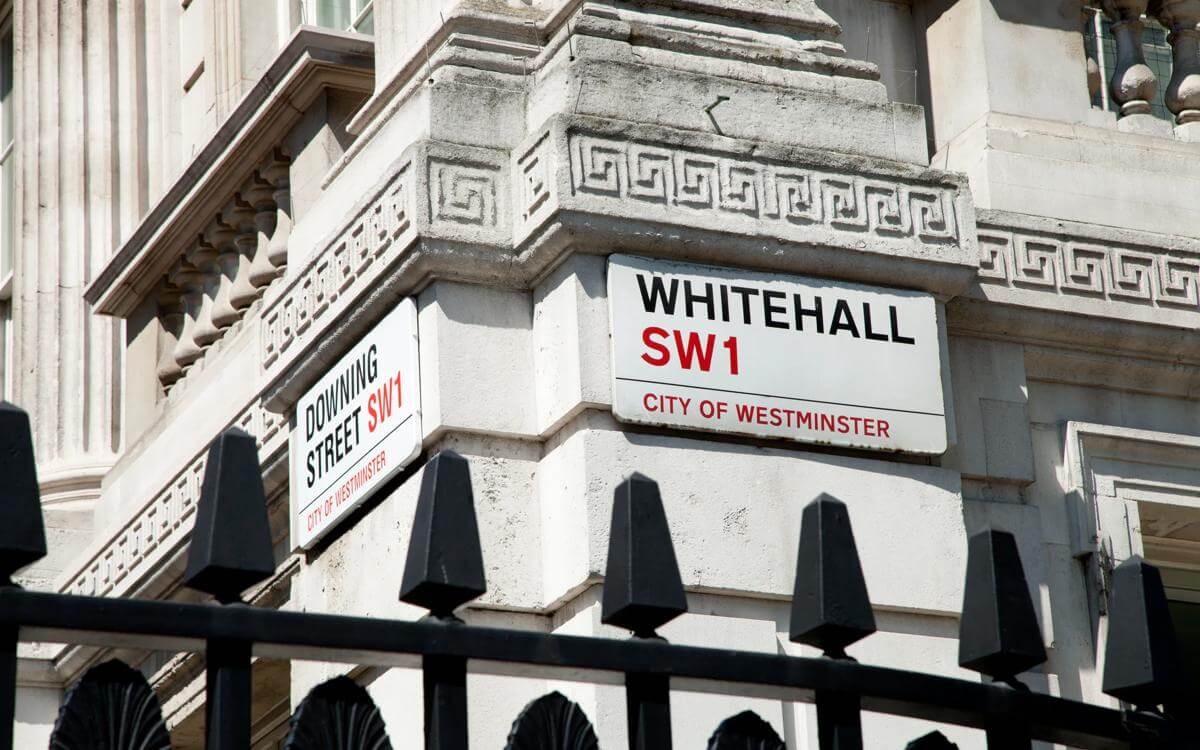Duval v 11-13 Randolph Crescent Ltd: a landlord’s breach of promise
It cannot be often that the Court of Appeal has had to resort to obscure Victorian cases on breach of promise to marry to assist with a modern landlord and tenant issue.
It cannot be often that the Court of Appeal has had to resort to obscure Victorian cases on breach of promise to marry to assist with a modern landlord and tenant issue. However, that is exactly what Lord Justice Lewison (who spoke for the whole Court of Appeal) did in this case to decide a novel and important point of law: namely, whether a landlord of a block of flats is entitled to give permission to one tenant in the block to carry out works that would otherwise fall foul of an absolute prohibition in that tenant’s lease, where the tenants of other flats in the block can require the landlord to enforce that alterations covenant.
Just as the menfolk in those 19th century cases were held liable for breach of promise to their prospective wives, so was the landlord held liable in this case for breach of promise (or more accurately covenant) to one of its tenants.
Background facts
11-13 Randolph Crescent Maida Vale consists of two houses which have been converted into nine flats, each held under leases granted for a term of 125 years. The reversion is held by a company owned by all the tenants (L). Mrs Winfield (W) is the tenant of one of those flats. In 2015, she approached L for permission to carry out works to her flat. L was willing to consent. The tenant of two other flats, Dr Duval (D), argued that L was not in a position to give that consent.
Clause 2.7 of W’s lease contained an absolute prohibition against certain alterations in the following terms:
“Not to commit or permit or suffer any waste spoil or destruction in or upon the Demised Premises nor cut maim or injure or suffer to be cut maimed or injured any roof wall or ceiling within or enclosing the Demised Premises or any sewers drains pipes radiators ventilators wires and cables therein …”
The works that W wanted to carry out included the removal of about seven metres width of load-bearing wall at basement level. Both parties accepted that these works fell within the terms of clause 2.7.
D’s case
D’s case was based upon clause 3.19 of her lease. This contained a mutual enforcement covenant by L in the following terms:
“That every lease of a residential unit in the Building hereafter granted by the Landlord at a premium shall contain … covenants of a similar nature to those contained in Clauses 2 and 3 of this Lease AND at the request of the Tenant and subject to payment by the Tenant of (and provision beforehand of security for) the costs of the Landlord on a complete indemnity basis to enforce any covenants entered into with the Landlord by a tenant of any residential unit in the Building of a similar nature to those contained in clause 2 of this Lease.”
D’s argument was that if L had the right to license what would otherwise be a breach of clause 2.7 (or to waive compliance with clause 2.7), it would have put it out of its power to comply with clause 3.19 and that it is implicit in a covenant like clause 3.19 that a landlord will not put it out of its power to comply with the covenant when the time comes.
L’s case
L relied on a landlord’s right to do as it pleases with its own property and stressed that, in the normal course of events, a landlord is free to consent to what might otherwise be a breach of a tenant’s covenant. In addition, clause 3.19 did not actually say that L was precluded from granting a licence for what would otherwise be a breach of covenant. If L consented in advance to an activity by a tenant, that activity will not amount to a breach of covenant by that tenant and there will therefore be nothing for L to enforce.
Judge’s approach
Lord Justice Lewison decided that the key question was as follows:
“if the landlord does grant a licence to a tenant permitting what would otherwise be a breach of an absolute covenant in the lease does he commit a breach of clause 3.19?”
He acknowledged that clause 3.19 did not expressly say that, but thought that he had to decide whether such a provision arose by implication in the way the obligation had been drafted. This in turn required an answer to the question posed by the Supreme Court in Marks & Spencer plc v BNP Paribas Securities Services Trust Co (Jersey) Ltd as to whether the implication of a term in a contract was necessary to give commercial or practical coherence to the contract.
The Judge initially identified that clause 3.19 had two limbs to it:
- A promise that every lease of a residential unit in the block would contain a covenant similar to clause 2.7; and
- A promise to enforce that covenant at a tenant’s request and cost.
The second limb was a contingent obligation. If the contingency arose (the tenant request and the provision of security), L’s obligation was then triggered and it was in this context that the Judge drew on (amongst other authority) the 19th century breach of promise cases by way of analogy.
In one of those cases (Short v Stone), Mr Stone had promised to marry Miss Short within a reasonable time after request by her. However, before she made her request, Mr Short married another woman. The court decided that as Mr Stone had put it out of his power to comply with his promise when the time came, no request was necessary by Miss Short for a breach of contract to arise. By marrying a third party, Mr Stone was in breach of his contract with Miss Short. Similar facts arose in another breach of promise case (Caines v Smith). In rejecting the defendant’s case that the aggrieved woman had not asked him to marry her, Pollock CB explained the position as follows:
“If a man were under a contract to deliver certain goods to another, and he had put it out of his power to do so by destroying them, it could not be necessary to request him to deliver them.”
Based on these breach of promise cases (and other authority), the Judge summarised the general law as follows:
“There is a long line of authority in which the courts have consistently held that where an obligor undertakes a contingent or conditional obligation, he is under an obligation not to prevent the contingency from occurring; or from putting it out of his power to comply with the obligation if and when the contingency arises.”
Decision
Applying this summary to the facts in hand, the Court of Appeal ruled in favour of D. The Judge concluded that:
“If, as I consider to be the case, a lessee would be entitled to require the landlord to enforce clause 2.7 of the lease in the face of a threatened breach, it seems to me to follow that the landlord cannot put it out of its power to do so by licensing what would otherwise be a breach of covenant. To put it another way, it would not give practical or commercial content to the obligation if the landlord had carte blanche to vary or modify the covenants; or to authorise what would otherwise be a breach of them.”
As a result, the Court of Appeal granted D a declaration that a waiver by L of a tenant’s breach of covenant or the grant by L of a licence to commit what would otherwise be a breach of covenant would amount to a breach by L of clause 3.19 of D’s lease.
D’s remedy
The question of what (if any) further remedy D was entitled to was remitted back to the County Court.
However, the Judge did take the opportunity to discuss the question of remedies generally in a case like this. He did this to deal with one of the arguments raised by L that if the Court ruled in favour of D, then every tenant in a block would, in effect, have a veto over the grant by L of a licence to do something otherwise prohibited by a tenant’s lease. Moreover, a tenant might exercise that veto for good or bad reasons or for no reason at all (at one point in the judgement, the Judge does say that some of the submissions made by L’s Counsel were at least partly designed to show D as adopting a “dog in the manger” attitude to the work that W wished to carry out).
The Judge countered this argument by pointing out that a landlord had no duty to inform its tenants in advance of what it proposed to do. If a landlord has already granted a licence and it has been acted on by the relevant tenant, then clearly the landlord would no longer be able to enforce the absolute covenant itself (the licence would still be effective as between the parties to it). In that case, an aggrieved tenant’s only remedy against the landlord would be to claim damages and those damages would unlikely to be substantial where a tenant had no valid reason for objecting to the licence. If the licence has not been granted, or has been granted but not acted upon, a court could grant an injunction either preventing the grant of the licence or requiring the licence to be undone. However, before deciding to do so, a court would consider what the tenant’s objections were to the grant of a licence and if those objections were groundless, an injunction may well be refused (an injunction being an entirely discretionary remedy).
Implications of decision for landlords
Although mutual enforcement covenants are not a requirement of the current edition of the Council of Mortgage Lenders’ Handbook, they are common in residential leases in blocks of flats. This case shows therefore how careful landlords have to be if they are asked to license something that is prohibited under the terms of the lease in question, especially as, at the time the request is made, the fact that such action may breach a mutual enforcement covenant in leases of other flats in the block may well not be at the forefront of a landlord’s thinking (although perhaps in the light of this case it now should be).
It is also important for landlords to remember that although this case concerned an absolute covenant against alterations, the same principle will apply to other absolute covenants in a lease where the landlord is prepared to license what would otherwise be a breach of one of those covenants. In this case, the lease contained a number of detailed regulations about the use of the flats. Examples given of absolute covenants in the leases in this case were restrictions on playing musical instruments or singing (except at specified times of the day), restrictions on placing window boxes on any external window sills and restrictions on parking cars in any yard, garden or driveway. Other common examples often found in residential leases might also include restrictions on keeping pets, restrictions on hanging out washing, restrictions on laying wooden floors and restrictions on changing the use of the property.
Implications of decision for tenants
The following points come to mind:
- Despite the Judge’s comments in this case about remedies, tenants in a block may well find their actions more heavily scrutinised and policed in the future by other tenants – a situation hardly conducive to neighbourly goodwill.
- Landlords are much less likely in the future to agree to a tenant doing something perfectly reasonable and well-intentioned that would technically be in breach of an absolute covenant in the tenant’s lease. Clauses very similar to clause 2.17 are very common in leases of flats. In the past, tenants may not have worried too much about them as, whatever the letter of the law, they would have relied on their landlord to act reasonably when faced with a reasonable request to carry out works. If, as seems likely, a well-advised landlord will now refuse such a request (to avoid possible liability to the other tenants), this could put off potential buyers and may ultimately devalue a tenant’s flat.
- Landlords may refuse in the future to enter into mutual enforcement covenants with tenants on the grant of new leases given how easy it could prove to breach such covenants. It is possible to set up a leasehold development which allows tenants to enforce obligations directly against each other (known as a letting scheme). However, it is not clear if letting schemes only cover restrictive covenants (e.g. not to carry out alterations or change the use), or whether they can also include positive covenants (e.g. to keep a property in repair or pay a service charge). Because of this doubt, mutual enforcement through the landlord has traditionally been the preferred option. If, in the future, blocks of flats have no mechanism for a tenant to enforce obligations against another tenant, that also may ultimately devalue a tenant’s flat and create two tiers of long residential leases (those with a mechanism for mutual enforcement and those without such a mechanism).
- When negotiating a new lease, tenants may in the future look to turn absolute covenants into qualified ones (i.e. not to do something without the landlord’s consent), especially as the Judge in this case acknowledged that L would not have been in breach of covenant had the alterations covenant been a qualified one in the first place. A landlord must though be careful about agreeing to this. For example, in the context of alterations, section 19(2) of the Landlord and Tenant Act 1927 means that a landlord cannot then unreasonably withhold consent to a tenant’s request to carry out the alterations in question (as long as the alterations amount to improvements – a question determined purely by reference to the tenant’s perspective).
Appeal
This case is not the final word on the subject. In March, the Supreme Court granted L leave to appeal. It is not yet known when the case will be heard, but its outcome will be eagerly anticipated by landlords and tenants alike.
Summary of key points
- Where a landlord has given a mutual enforcement covenant to all the tenants in a block, it will be in breach of that covenant if it licenses one tenant to carry out alterations which are absolutely prohibited.
- The same principle will apply to all other absolute lease covenants (but not qualified ones).
- A landlord does not have to tell the tenants in advance what it proposes to do.
- If a tenant in a block does not have good reason for objecting to its landlord licensing another tenant to do something that is absolutely prohibited, its remedies may be restricted.
- This decision could affect the drafting of long residential leases in the future and could ultimately result in tenants in a block not having the ability to enforce obligations against each other.
- Changes in practice as a result of this decision could devalue a tenant’s flat.
- An appeal to the Supreme Court will be heard in due course.
Cases cited
- Dr Julia Duval v 11-13 Randolph Crescent Ltd [2018] EWCA Civ 2298
- Marks & Spencer Plc v BNP Paribas Securities Services Trust Co (Jersey) Ltd [2015] UKSC 72
- Short v Stone (1846) 8 QB 358
- Caines v Smith (1847) 15 M & W 188
This article was originally published by Property Law Journal in May 2019.
Contact

David Harris
Professional Development Lawyer
david.harris@brownejacobson.com
+44 (0)115 934 2019







































